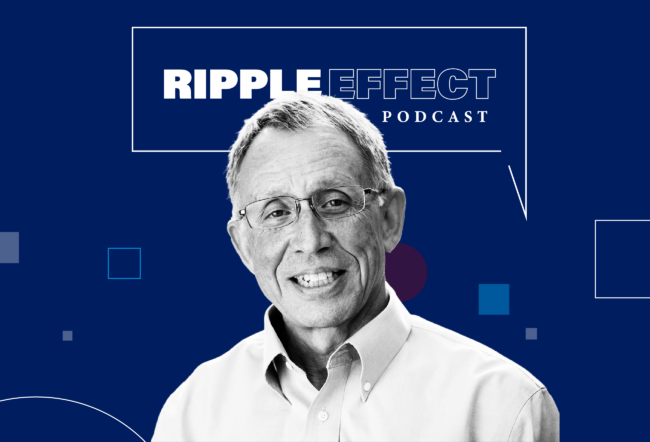A resurgence of urbanization will be the next big wave in India’s demographic dynamics, according to Roopa Purushothaman, head of research at Everstone Investment Advisors. Purushothaman, who has closely studied growth trends in the BRIC economies, says that increasing participation of women in the workforce, greater access to credit, and higher spending among rural Indians are other trends that are likely to continue. She shared her insights with India Knowledge at Wharton at the Wharton India Economic Forum in Philadelphia.
An edited transcript of the conversation follows.
India Knowledge at Wharton: You were a co-author on the [Goldman Sachs] report, “Dreaming with BRICs: The Path to 2050.” Do you feel that the report has stood the test of time?
Roopa Purushothaman: I do. It has been seven years since we first published it in late 2003. For India in particular, the growth rates we talked about trend over the long run at 6.5%. If anything, a lot of people think that’s probably too conservative. For China, it is yet to be seen because we [have] had high trend rates, but they fall off pretty dramatically once you get to about 2017 or 2018 because of China’s demographics. For China and India, more than anything [else], even as we have seen the global downturn happen, they have taken up more market share, particularly when you look at things like global demand. And that was the inspiration for the piece in the first place. It wasn’t to say these are four economies … [and] look at how they are going to grow. It was to say that as global investors when you think about market demand, global demand is going to shift towards these economies.
[For] Brazil and Russia, the projections for trend growth were relatively conservative. They were about 3.5% over the long run. And I think we are going to see that. They are just going to be a little bit more because China and India are more commodity takers and the others [Brazil and Russia] are commodity producers. So you are going to see them — particularly now — go through different ups and downs at different times. They are an interesting basket together. The numbers have come out, [and] between then and now, [they are] more aggressive than [what] we have projected. [On] trend growth over such long periods, obviously we know that each year we are not going to hit it. We are going to see a lot of submerging and some times, some years, where they overshoot [our projections]. But it’s pretty much intact. We wouldn’t change anything and we haven’t.
India Knowledge at Wharton: Right. If you were to write a new report today, are there any other markets that you would squeeze into that acronym [BRIC, for Brazil, Russia, India and China]?
Purushothaman: There have been lots of different variations of that acronym thrown around. I don’t think so. I mean, the point of [the BRIC acronym] was to be representative and the idea of taking those four markets was that they were the four largest developing countries and big-population economies that are growing relatively fast; it’s not rocket science. But they are going to be able to change the face of global demand over the long run. There is a whole set — you can’t really just go down to [the] largest GDP. But if you look at economies that have relatively fast growth and big populations as well, there is a nexus of sort of another group. Goldman Sachs has actually done a whole piece on the next 11, so there is a whole set of other countries that are both large-population and [are] changing in terms of their reform processes, demographics, and so on that really push them to be big changers in terms of their weights in global demand over the next few decades.
India Knowledge at Wharton: Let us move on to a more recent project. You wrote a report, “The Next Urban Frontier: 20 Cities to Watch in India.” Can you tell us the top trends you noted in that report?
Purushothaman: Sure. Just as a little bit of background … In the role I play now at Everstone Investment Advisors, the research is very long-term and it focuses on demographics. [It is] trying to look beyond the headline demographic numbers and trying to see over the long run what structural changes are going to define the economy. So urbanization is one that we think is going to be a big theme that everyone has talked about a lot. But in India urbanization has played out in a very different way [compared] to what we’ve seen in China. You have actually seen urbanization peak in the 1970s — the pace of urbanization — and it has actually since then fallen off.
India Knowledge at Wharton: In India?
Purushothaman: In India. So between 2005 and 2010 we think we are going to start to see that inflection point change and we are going to see an increase again. But what we wanted to say with this most recent paper was that it is the next coming trend, that when it happens to India it is really going to affect global urbanization patterns. We think on very conservative estimates about 380 million people are going to be added to India’s urban spaces over the next few decades. So that’s more than the entire population of the U.S. moving into urban India. So that’s going to be one of the most defining changes that we have yet to see.
And even when you look now at what has happened — any growth that we have gotten in urban spaces has largely been due to natural increases, like people within cities having kids. We haven’t seen migration take off either in the way that it has been hyped up in the media or when you just look at social issues and what is taking place. There is a lot of hype around it but we haven’t seen it take place on the ground to the degree that you see it talked about in the papers. And it hasn’t taken place to the degree that we have seen in other parts of the [country]. So we have yet to see that happen but that is going to be a huge change.
When we did this paper we partnered with the National Council of Applied Economic Research (NCAER). First of all, everyone thinks this process is just happening to the country. Either we are just going to let it happen to us or we are going to try to stop it. That’s almost been the attitude towards it — up until now. And we wanted to say, look, this is a process that is going to happen. It could be hugely beneficial to the economy in terms of providing an outlet for semi-skilled labor to be able to find pockets of unemployment. But we need to understand how the process is actually occurring on the ground.
We tried to take the survey that NCAER does, which basically looks at income expenditure patterns across India and tried to look at the top 20 cities to see how these things evolve. And you really get quite interesting patterns. You know, for India, any time we talk about averages it’s really masking these huge swings. So averages mean very little.
When you look at anything — the percentage of their income that households spend just on average spending — it goes from houses in Mumbai and Ahmedabad spending about half of their income every year, all the way up to 75% [for others]. So you get very big changes, which have implications. [It is] not necessarily income that matters but it’s almost different spending behaviors as you go across geographies that really determine what is happening. So there might be these smaller cities [that] might not be as big as the five-million plus cities. It might be a million or just under. And they don’t have income levels that are as high as the biggest cities but they just spend a lot more. So what you are seeing is that in some small towns consuming spending patterns are actually evolving more quickly. There are some deeper markets….
India Knowledge at Wharton: How do you account for that?
Purushothaman: India is not by any means a homogeneous market. It is a bunch of heterogeneous markets that have a lot to do with cultural patterns with regard to spending. It’s not just [that] as your income rises you instantly see evolution towards certain things.
India Knowledge at Wharton: Is there an explosion of credit, for example, that’s happening?
Purushothaman: Again, you know what you have seen for credit is that there is probably a lot more penetration than people expect in Tier-2 cities. The cities I was just talking about were Tier-3. Tier-2 has big demographics [of] probably between one million and five million [people]. They are the next big pocket for sectors that are geared towards demographics of food, apparel and financial services. It’s very idiosyncratic but you will get some Tier-2 cities that are very well penetrated. Some Tier-1 cities — these five-million plus cities that we always talk about — actually aren’t [as well penetrated, and] there’s still a lot of legs for the financial penetration story to play out, particularly with respect to credit. When you look at the highest penetration they will be these Tier-2 cities that have the highest [penetration]. You can’t really go by large swaths to pick out what city you are going to penetrate. You will need to look individually because there are a lot of idiosyncratic patterns.
India Knowledge at Wharton: What are the biggest changes you have seen in consumer behavior recently?
Purushothaman: Before I get to the demographics is that… when you look at India relative to the rest of the BRICs we are at about just over $1,000 [of income annually] per head. We are less than half of the next highest BRIC [economy], which is China. So our consumer spending profiles look very different even if we are in the same bracket of the BRICs. We are entering the sweet spot when you get to about $1,500 per head to $3,000 per head, where for an increase in income you start to get a rapid increase and absorption of basic consumer durables. We are still getting to that point where you start to see from [purchases of] televisions, cars and so on that big S-shaped curve; we’re just at the beginning of it. You have that happening across the economy.
But there are also things that are structurally changing that once they happen they don’t — [and] you can’t — reverse them. One big thing is women are going to work. We have started to see between 2000 and 2005, when you cut employment patterns by geography, by age you don’t see any changes. The only big change you see is that there has been a rise in the participation rate of women. That is big because when you go far back in the data, back to the 1980s, participation rates have been low and they have been falling.
This is the first time we see a rise and it is a pretty significant rise. That has really influenced [trends] — at least in urban India — because that’s largely where we see the wage and salary employment take place. That has sparked a big shift in terms of how people consume. You see in households where women have started going to work a big increase in [use of] financial services, and spending on children — whether it is clothes, toys or education — personal care, and things like transportation. There are certain trends that are happening that are pretty long-term. That has held the country pretty well throughout the last sort of downturn that we have seen.
India Knowledge at Wharton: Would you say savings are down now?
Purushothaman: No. Savings actually have risen…. Household savings have risen. So, again, we have a lot of propellers for the economy to go forward. When you look at [the] demographics, savings rates are just poised to rise and they will rise for quite a while going forward. We are seeing that happen in the data, which hopefully will help our investment rates as well.
India Knowledge at Wharton: In light of all the potential urban growth, how do you see rural India faring?
Purushothaman: It has been an interesting balance of the economy through the last two years. When the fall of 2008 hit, middle-income consumption tanked. Tanked is pretty dramatic. Because for India, [the] lowest [point, or] our trough for GDP growth, was 5.8%. So the markets took a huge hit, but in terms of real activity we still stayed pretty strong. But you did see a dip in middle-income consumption. But at the time because beforehand we had [had] a relatively good monsoon, rural spending stayed pretty healthy; Not even just healthy, it was pretty robust. When you look at fast-moving consumer goods, for example, you saw rises in consumption for these kinds of goods [being] much higher than [what] people expected, even taking into account or adjusting for the downturn. So the rural spending story stayed very healthy.
And then by the time 2009 rolled around you sort of saw the manufacturing sector revive. We saw GDP get its footing back. You saw middle-income consumption recover. There were about two quarters where we saw a dip and then we saw it revive. By that point the monsoons started to play into people’s psychology, so spending in rural India was reined [in] a little bit. We have had this — for want of a better word — balancing where the rural consumer really took up the gauntlet in 2008 and early 2009. And then this year, [and] what we see going into the coming year, is really the return of the urban consumer.
India Knowledge at Wharton: Looking ahead five or 10 years, what would the composite of the urban consumer look like?
Purushothaman: For India it is so difficult because it depends [on] where you are and what city you are talking about. When you look at overall spending we saw the top 20 cities account for about $100 million of consumer spending in 2006 and 2007. A third of it was devoted to food but again [in some segments] a much lower share [was] spent on food and a much higher share spent on health. That share of food is going to continue to shrink and move towards clothing, personal care and higher value-added services. But that change is happening very differently as you move across geographies.
India Knowledge at Wharton: Does the report — or would you — make recommendations to companies on how they can approach the Indian consumer? It sounds like it’s a very granular thing to a degree.
Purushothaman: It is quite granular. The thing is that India relative to China has a huge amount of demand, right? Close to 60% of our GDP is composed of private final consumption expenditures. So we have a very different sort of composite of our economy relative to, let’s say, China. So there’s a huge amount of demand. The issue is that we haven’t figured out our supply. Whereas in China, supply is completely figured out and trying to stimulate demand is more of the issue. There is demand for many things but companies that stay strong have really figured out how they are going to get consistent supply over the long run because you see a lot of products that come to market; they are successful for a year or two years and then they disappear. So the real important thing is to make sure that the best companies really stay capitalized and figure out a long-term supply strategy. And if they can do that you will find that there is demand for good-quality products. But I think it’s very hard for companies to have stamina in the Indian market just to figure out the logistics in the supply chain. That’s the biggest issue.



